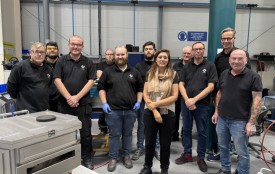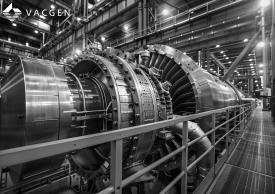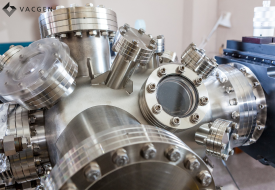Introduction
A Coordinate-Measuring Machine (CMM) is a device used in manufacturing and quality control to measure the physical geometrical characteristics of an object. It is commonly used in industries such as aerospace, automotive, and precision engineering. By using a coordinate measuring machine (CMM), VACGEN can guarantee precision, paramount in the modern and fast-changing manufacturing industry. Learn more about the CMM and they’re potential in the industry below.
Before CMM
In the world of manufacturing, product designs have evolved exceptionally. Historically, product designs were of simple structure and product designers were flexible with accuracy and dimensional tolerance requirements. Quality engineers used hand-held tools (callipers) or optical comparators to measure the dimensional qualities of an object, making sure that the object loosely matches the design intents. However, due to the manufacturing industry being a capricious industry, that is evolving at an extremely fast rate, the rapidly increasing complexity of designs and design quality regulations requires an intense manufacturing inspection system to compete with demands.
Introducing CMM
CMMs were founded by Ferranti Company in the 1950s progressing from only moving through 2-axes, to computer controlled multiple-axes machines. The CMMs purpose is to precisely measure components’ dimensions, analysing the objects’ coherence to the design’s intent based on the 3-Dimensional Coordinate Geometry principles.
The machine has the capabilities to collect information on an object’s height, width and depth, noticing differences of tenths of a millimetre. The machine additionally has the expertise to accurately analyse physical properties such as the parallelism of the object, angles, contours, and surface finish.
Operation
The in-depth data is collected by utilising a contact measuring probe and transducer technology, which is then analysed using specialised CMM software. The software can be used to compare to the original design intent, highlighting inaccuracies in a manufactured component.
The Advantages of Using a CMM
Quality Assurance Guarantees
Compared to traditional methods of inspection checks, a CMM offers unsurpassed reliability. Not only digitally measuring components, but it also offers dimensional analysis, CAD comparison, tool certification and reverse engineering. This upgrades the quality assurance process, allowing companies to guarantee high-quality products and services.
Efficiency
CMM’s reduce the quality assurance process time. Streamlining the manufacturing process, whilst maintaining high levels of accuracy and precision. In turn reducing bottlenecks, often found in quality inspection departments.
Computer Operated
The CMM is mostly computer controlled. Deducting the involvement of human operators reduces human error that could lead to faulty products.
Limitations of CMM
Complicated to Operate
CMM systems can be complicated to operate. Operators of a CMM need to be knowledgeable about the principles of Coordinate-Measuring Machines and often it takes time in order to understand the machine.
No Standardisation
Currently there is no standardised version of a CMM, there are many software versions and machines manufactured by a variety of companies. This makes it difficult to switch between CMM software.
Our CMM
VACGEN’s CMM allows us to guarantee high-quality products where tight tolerances are critical. Our machine is a ‘Quantum 4 CNC’ bridge CMM with a Renishaw probe system operating using the latest computerised stress analysis to produce a stable, rigid and accurate CMM. The CMM we operate allows for a large variation in model size without the chance of compromising on accuracy. This vital tool for quality control and dimensional inspection in our manufacturing processes, helps to ensure that the produced components meet the specified design requirements. Ensuring that our customers receive the services they require.








